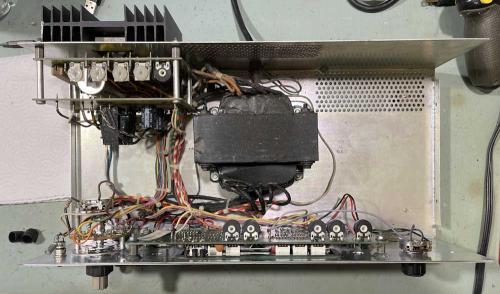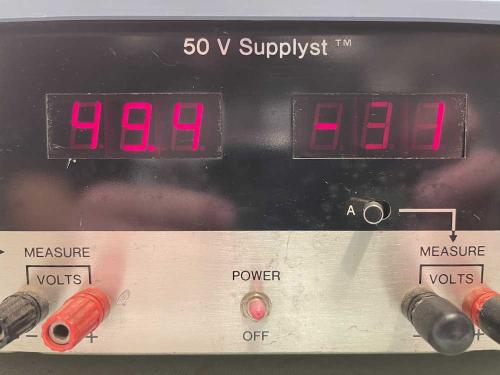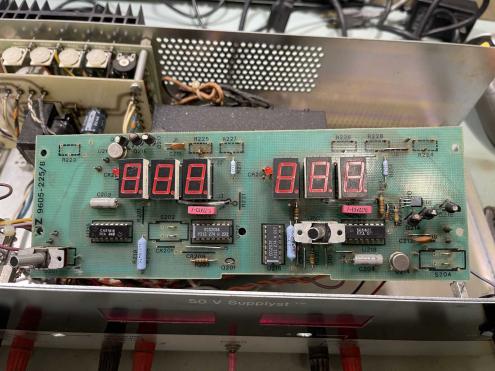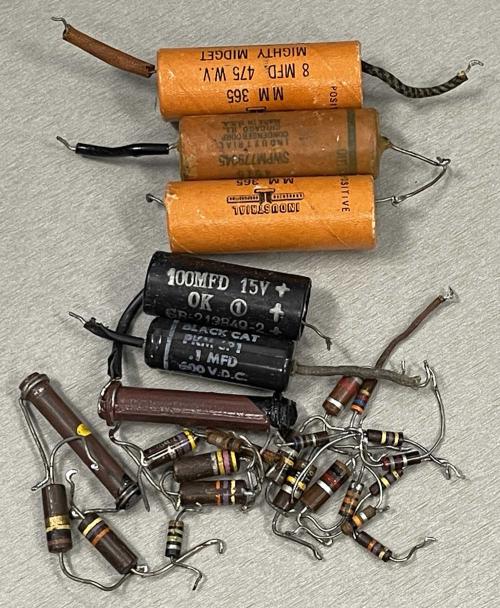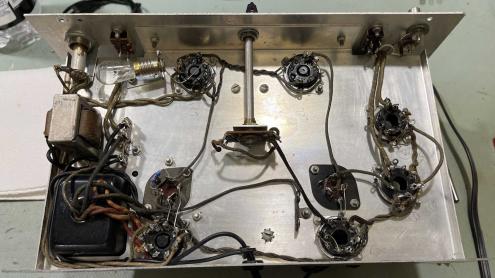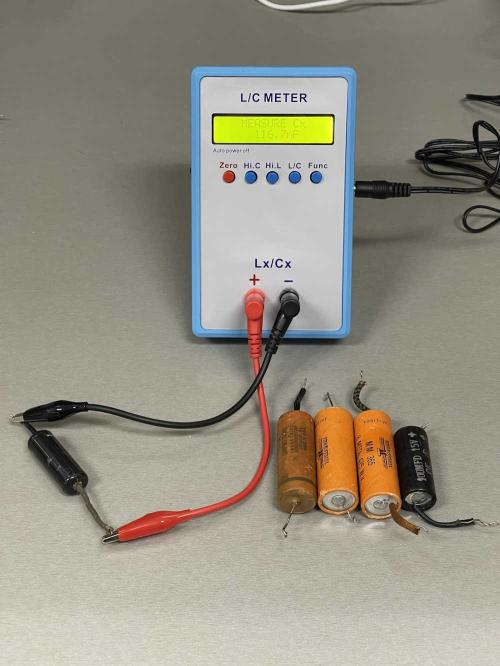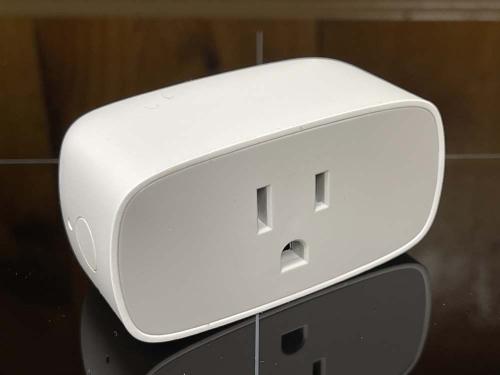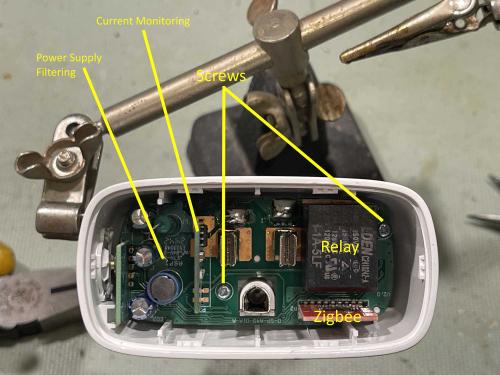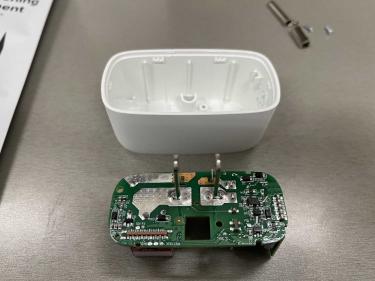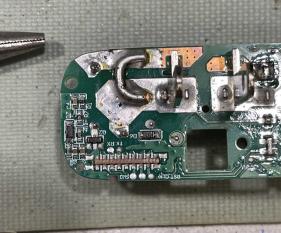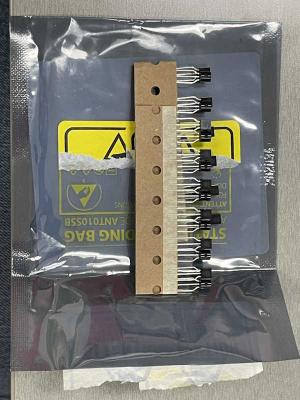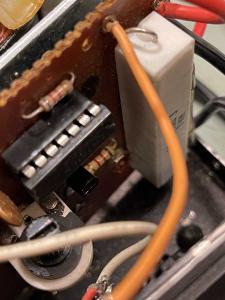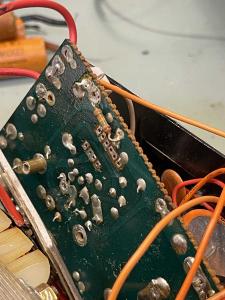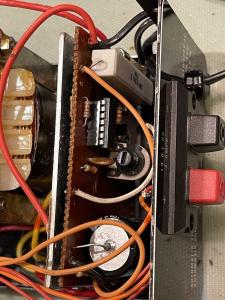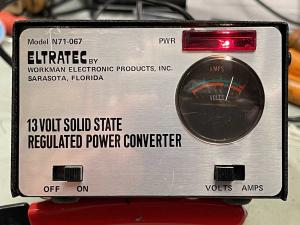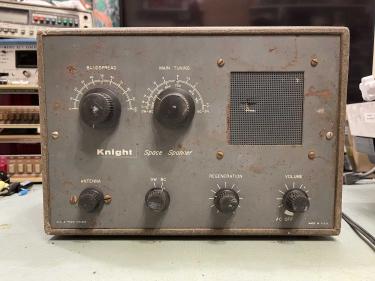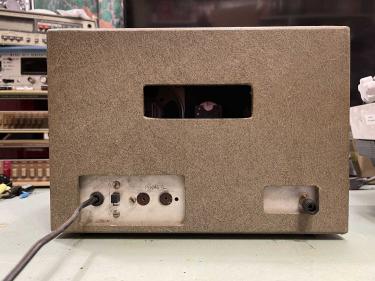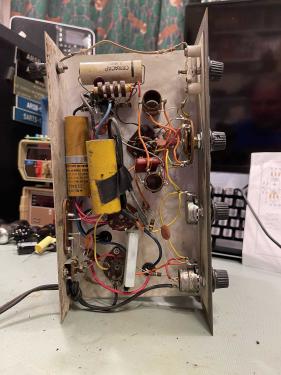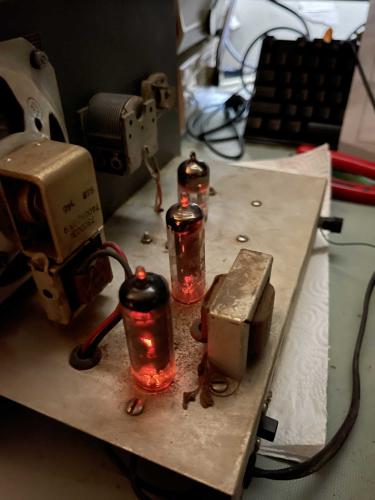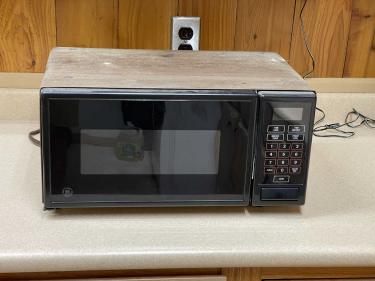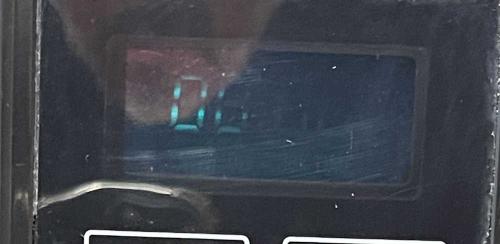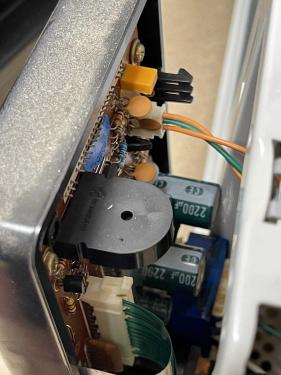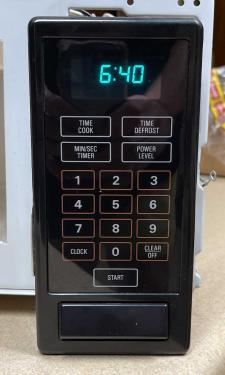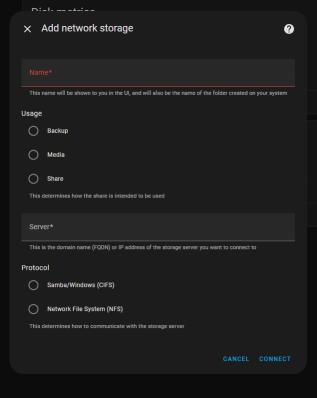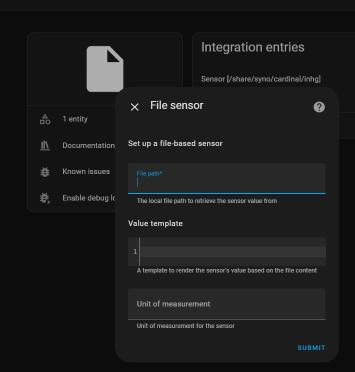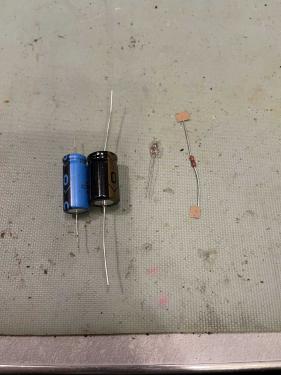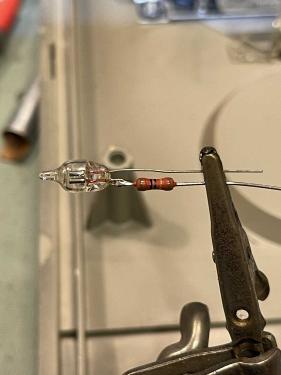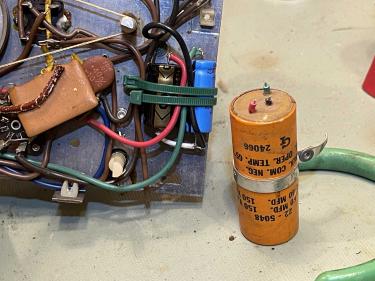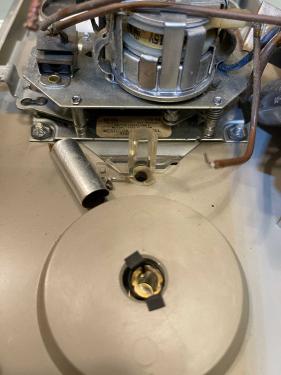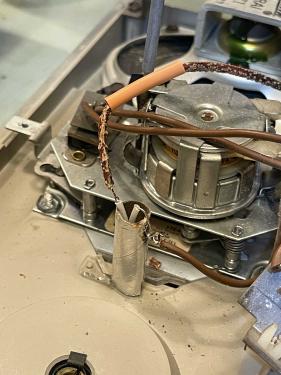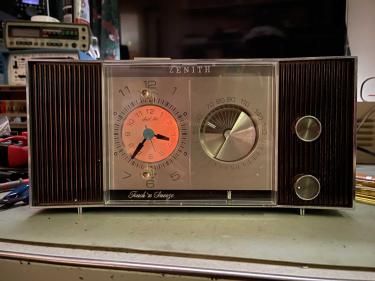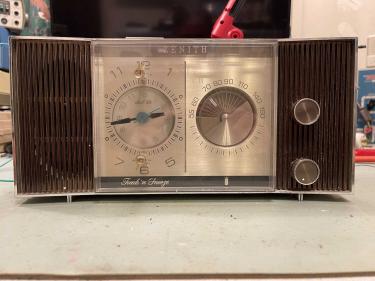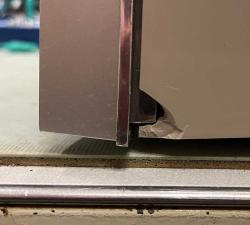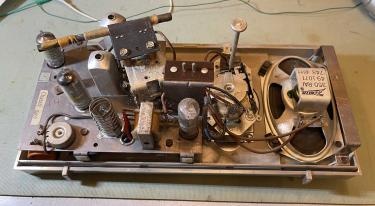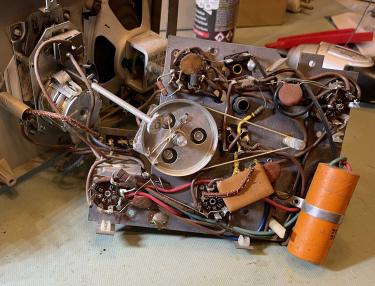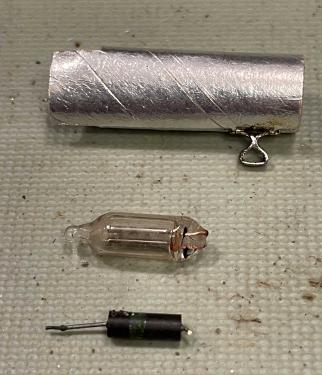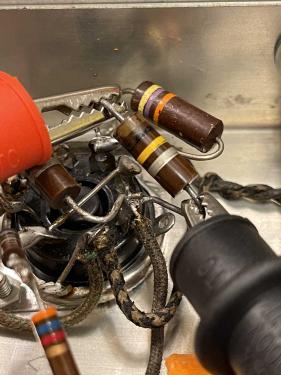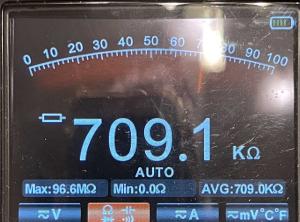- 2025
- Oct
- 3
A Viz WP-705 Power Supply part 1: Analysis.
On the bench while I wait for parts for the Heathkit AG-7 is this Viz WP-705 power supply. This came from the TUSCO show earlier this year, and while I didn’t need it, the price was cheap. The vendor originally was asking half a bill for it, but when he plugged it in and the ammeter didn’t light up, he reduced it to $10. I took it for that, just because a nice linear supply is always useful.
Viz is the “company” that took over RCA’s test equipment division as it was phased out. RCA contracted out this division to start with, so it was more of a rebadging than anything else. The company that took this over, Jetronic, was already one of their big contract manufacturers, some new paint in the logo area and Viz was born. It still looked just like the RCA device, was full of RCA parts, but had a different name on the front.
Jetronic Industries Inc. appears to have continued until 2000, when they filed for bankruptcy. It was a shell company for some time, before finally being dissolved and removed from records in 2012 for failing to file necessary reports with the SEC. That’s all there is to their story.
Here’s the device in question:
This is a single-output power supply with the ability to use it’s internal meters as external meters - that’s quite unique. It’s part of a series of supplies, with each successive model number adding more features and outputs. This appears to be a middle of the series unit, or bottom of it’s tier depending on where you place it in the model stack. It’s 0-50VDC, 0-2A, and is a linear device built out of discrete components with only the displays having ICs in their circuit.
Inside is a big chonky transformer:
So what’s wrong with this? When I bought it, the ammeter wasn’t working at all. That is, the display was dark. When I put it on the bench, the ammeter lit up, but the display rolled all over the place and didn’t respond to anything. It was like whatever A/D this thing was using was bad and just floating.
What’s on the board?
The unit uses two older RCA chips to do it’s work - the CA3161 and CA3162, which are a driver/converter pair. There’s some glue circuitry as well, which looks like it’s for the display select during driving. As you can see, there’s some different-shape transistors on the board, as well as some ECG parts with a much nicer (i.e. later date) marking, indicating that this device has had some work done to it in the past.
Since there’s not a whole lot here, and the display is still scanning - that kind of points to the CA3162 A/D converter. Unfortunately, with NTE being gone, there are no more new replacements, but NOS devices exist. It’s just a matter of finding one.
I have a schematic on order, I’m going to study that for a bit before proceeding just to make sure I’m not missing anything. Stay tuned!
Next part of this series: https://wereboar.com … 2-musings-on-faults/
- 2025
- Oct
- 3
The Heathkit AG-7 Audio Generator part 6: Removing everthing.
In the last post, I checked a few parts and found that pretty much every resistor (that I could measure in circuit) was out of tolerance, in a bad way. Seeing as how the device stopped oscillating, and started smoking, I decided that replacing everything was the best course of action.
I’m trying to save the old parts for later testing purposes, so unsoldering with intact leads is a must. That does tend to make it’s own problems, something we’ll discuss later on.
Here’s what I recovered (save the 10k removed in a previous step):
The chassis is now empty.
For testing, I just grabbed my scope-meter and a capacitor checker. I’m not really worried about ESR or leakage here, they’re just old and probably have issues with both.
So on to the good stuff. How bad do the parts test? Well, that’s the fun part. Most of them are ok-ish, even the ones that read substantially higher in circuit. The 100k in the previous post? It’s back to well within in tolerance range.
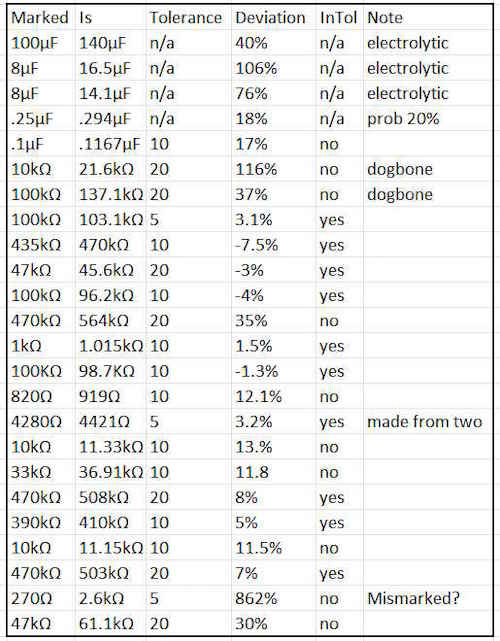
What happened here? Carbon Composite resistors change value over time because the carbon grains disassociate with one another, and they collect moisture. I hit these with some high heat during the desoldering process, which probably drove out the moisture and brought them back near tolerance. I suspect if I left these alone for a year or so, they’d be back to what they were. Perhaps I’ll segregate them and do a follow-up next year.
Of particular note was that 270Ω part that read 2.6kΩ. While this looks brown to me under normal lighting, the camera shows it has more of a red hue. This guy must have been pretty warm over the years and the color simply faded. It’s actually marked 2.7k.
Next up is actually placing new parts. Check back soon!
Next part of this series: https://wereboar.com … ion-thats-not-right/
Previous part of this series: https://wereboar.com … nna-need-everything/
- 2025
- Sep
- 18
Modifying the Ikea Inspelning smart plug for always-on operation.
Disclaimer: This involves working with high voltages and high currents, and is a device that you’re going to plug in to a wall outlet and leave there. Make sure you’re comfortable working with this kind of stuff before proceeding! This is a guide and you need to know what you’re doing beforehand. If you don’t - don’t! Mistakes can destroy property and kill you.
Ikea is one of the oddest stores I’ve run across. Known for their flat-pack furniture, they also have a line of relatively friendly and cheap technology devices that operate on common standards. One of these devices is a smart plug called the Inspelning (translation: recording.) It’s available in multiple countries with different outlet formats, but the one I’m going to be concentrating on is the North America version.
This is a generic ZigBee compatible device that offers both remote control via their own hub and other compatible devices, as well as providing both power consumption and line voltage monitoring functions. It exposes these via Ikea’s own application, or by entities within Home Assistant or some other smarthome system. I’m using Home Assistant, and these have no issue integrating and exposing all information.
So what’s the modification?
These are cheap devices at ~$13 - and you’re not going to find something with a power monitor that’s much cheaper. But…they can also turn on and off, which means if you’ve connected something that relies on being powered on all the time, having an accidental trip that shuts it off could be problematic. My modification is to make the device permanently on. This also has the effect of preventing premature power supply failure, which can cause relay issues and seems to be a common failure mode with smartplugs in general as the components inside are as cheap as you can get. I want a power monitor, not a remote plug, and this is a way to do it.
First thing is to get the device open. These are relatively benign, and are just clipped together. There are 6 plastic clips - two on the top and bottom, and one on each side. I don’t have any pictures of opening because it’s not a picture friendly process, but here’s how I did it:
You’ll need some sort of opener tool. I used iFixit’s blue spudger tool to pry a bit of the top of the case back at one of the clips and then pry up the gray plastic face. I then used one of their “guitar picks” to hold it open while I used a butter knife to pry-pop the rest of the face off. If you’re careful, the gray plastic should deform enough to release the clips on the sides.
I tried using the spudger to go all the way around, but the sides are simply too curved to get a good entry point, and not flexible enough to pry. I wouldn’t try this with a device that’s been around for a while, but a new device should have enough flex left in the plastic that you’re not going to break anything. Try not to insert anything in the lower part near the ground hole, as there’s a piece of circuit card that sticks up in this area.
Once the face is off, it’s relatively simple to access the circuitry.
First, remove the ground lug assembly. This just falls out, as it’s set in a hole. Set it aside. This isn’t connected to any of the circuitry inside, so if you needed a two-prong device to replace something like an old X10 two-pin appliance module, this is the way you could do it. I don’t suggest you do this, however, as modern outlets are all grounded.
I’ve named the various parts, but we’re not really interested in anything but the screws. These are extremely shallow philips screws, so you’ll need something to fit them. I didn’t have the right kind of driver handy, so I just used a thin blade flat to catch and back them out. Don’t apply a lot of force to these, they’re really cheap and wanted to destroy themselves.
The other parts here are the relay itself, the zigbee control board, the current monitor board, and the power supply filter capacitors. Chances are the latter would need replaced if you encounter a situation where the relay chatters or becomes unreliable, but that’s not a given and outside the scope of what is being presented here.
Push up on the plug tines to move the board to the top of the case. There are little pips that help keep in inside, you may need to gently wiggle to get it out. Avoid pulling on the control boards.
The back of the board reveals what we’re after.
There are two large soldered pads on the left of the board. This is the area that the relay connects when it closes, and connects the hot tine to the hot receptacle on the front of the board. The current monitor is in the neutral line, and is always active so it doesn’t matter if the plug is “on” or “off.”
We’re going to jumper across the hot line pads to create an always on loop. You can still activate the relay at this point, but it will do nothing.
CAUTION - you’re working with something that’s going to be plugged into the wall and will be conducting a potentially large amount of current. Make sure your connections at this point are well-soldered and using a properly rated gauge of wire. A half-ass connection won’t do it here.
I’m going to use a piece of 12ga solid from a strand of THHN. I’ve cut a section and bent it around a pair of needlenose pliers, then trimmed it.
Why a U-shaped piece? Mostly to give plenty of area to solder. You don’t want this thing coming undone inside the case, and the solder is going to be part of the 120VAC conduction area. Err on the side of caution here, give yourself plenty of area that’s soldered to and touching the pads.
Make sure you have a good fillet all the way around the jumper.
Note - you’re going to need a decently hefty iron to do this - your little 20W SMT iron won’t cut it. A good 35W with a flat tip should work, but I used my 80W iron. Make sure your wire is pre-tinned and put a little solder down first. It will probably take a bit of doing to get a good placement, but make sure your wire has a good fillet all the way around, and is centered well in your pads. Don’t let any solder or wire drift off near components.
This should be good for at least what the relay offered, probably more since that relay is about as cheap as you can get.
Assembly is, of course, the reverse of disassembly. Install the board, the ground lug (make sure the flat is lined up properly with the area meant for it,) the screws, and snap the face back on. Do a quick ohms check between all 120VAC connections to verify there’s no shorts, and if good - plug it in and connect it to your smart devices monitor system.
I added mine to my test devices area and got this:
It’s reporting no current draw (other than the dithering these show) and is correctly reporting line voltage. The plug is not “on” as this point, although you can clearly see it still understands the button press. I suppose you could use this as some sort of scene selection if you wanted.
That accomplishes what I set out to do. While there are a few companies that provide non-controllable devices that do the same thing, this is by far the cheapest way of doing it.
One final note, Ikea has announced that they will be discontinuing the ZigBee devices at some point in the near future, in favor of Matter. I assume that just involves replacing the control card, but who knows. Get them while you can!
- 2025
- Sep
- 3
A Workman Electronic Products N71-067 Power Supply - The Repair
After poking around in the power supply for a little while, it was apparent there was something going on right around the LM723 and it’s driver transistor. Since one had to be pulled out to test the other, I pulled the driver transistor. It’s shorted C-E, so that’s the problem - the LM723 can’t regulate a voltage when the regulator’s driver is driving the output to the max.
That’s an easy fix, it’s a S8050 transistor. I had to place an order for some other things, so I ordered a batch of transistors.
It was easy enough to install
However, since the LM723 probably was quite stressed from this failure, I decided to replace it as well. I just cut it out and pulled the pins from the solder pads, then removed the solder with wick. That 1970s phenolic board smell! It’s going to get socketed just in case. (Finding these in DIP is getting kind of difficult!) This was a device where they only left copper where it was needed, so it came out easily.
Since the big filter was quite old, I replaced it as well. Here’s a shot of the completed and re-installed board:
And, it works!
So what all was replaced?
The S8050 driver transistor for the series pass regulator.
The LM723 Regulator IC
The main filter capacitor.
I did dial the output back a little to 12.8VDC, just because I want this on my bench for other things.
A relatively easy repair, but there’s not much in this thing to go wrong. Next up is the Heathkit AG-7 that’s been kicking around for a while - it’s going to need more than I thought, as well as a Viz (RCA) power supply with a designed-in fault.
Previous part of this series: https://wereboar.com … /[url]
- 2025
- Aug
- 13
A Knight “Space Spanner” regenerative radio.
So, this item literally followed me home from the Cincinnati Hamfest.
Seriously.
I was talking to a guy about a Simpson 260, and he asked if I was interested in a radio. I said no, I had an old coffin TRF in the queue. He picked this up and handed it to me and said “If you do something with it, you can have it.” I said “I promise it will go on the bench, but nothing more than that.” Deal done.
So what is this thing?
It’s a radio from Knight (Allied) called the Space Spanner. It covers broadcast and shortwave bands. It’s based on an old design called a regenerative receiver - essentially, the RF is re-amplified before being detected, so hopefully you get a stronger output with less active components. It’s cost-reduced before cost-reduced was a thing, and was obsolete by the time this kit was made. It was cheap, however, and allowed a new kit builder to get something and cut his teeth on it for not a lot of cash.
It’s in fairly poor condition, and probably sat in a garage after the builder moved on. Everything is there, however, so that’s a plus. The cabinet is a plastic-wrapped wooden case made from plywood, and is actually a fairly nice cabinet. It’s very dirty, however - scrubbing with 409 barely made anything except blackened towels from the dirt. (I’ve read the cabinets for these were made by a luggage company.)
Inside, the chassis shows signs of being modified over the years. There’s a giant capacitor stuck in there, and it’s attached to the final point on the original filters. I have to assume the original is bad, and the person just stuck a 100μF in there because that’s what they had, and it worked. I’ll know more on that, later.
The antenna terminal is loose and the plastic portion is locked open. That’s no big deal, and a pair of needlenose fixed both the loose screw and the locked connection. Tubes are all there, and most capacitors are disc. I don’t see any real reason for concern here, so into the isolation transformer it goes. Probably should dim-bulb this, but eh…I like living life on the hot edge.
I got a little noise out of it, but nothing else. A tube wiggle made lots of noise, so I turned it off and gave all the pots and tube sockets a few drops of DeoxIT. After a good cleaning, I put the tubes back in…
It came right to life. After messing with the controls, I was able to get most of the strong local AM stations with a short piece of wire. So, the device is working, which is pretty cool.
So, what next?
I think I’m going to do a basic restore on this - new resistors and a new filter. There’s not much else, all the other parts are disc capacitors save the ceramic cap at the top, and it looks good. I do need to figure out what’s up with the antenna control, it seems like those spacers are too long and the knob won’t go on properly. I know it’s the correct knob because it both matches what is on the rest of the unit, and other images show this knob. Maybe some shorter spacers are in order, who knows.
Anyway, this is a really cool piece of old tech, and deserves a chance to live properly. Stay tuned, more on this unit coming later, rather than sooner!
Next part of this series: Coming sometime.
- 2025
- Jul
- 8
An easy fix for this GE Microwave Oven.
As the great Monty Python’s Flying Circus once told us: “And now for something completely different.”
This is some unknown model of GE Microwave. It’s from the early 1990s, and was originally installed in a camper van that a relative is scrapping. Since the unit didn’t get used a whole lot, I took it home thinking that it would work great for an office microwave. There’s probably a model number on the information packet taped to the cavity, but I didn’t care enough to open the now-fragile paper envelope.
Well…not so much. This is what I saw when I plugged it in:
There’s a lot of things this could be. Disclaimer: I used to work as a factory depot tech at GE, and saw this thing’s cousin boards (we just did the controls, repair centers or field techs did the actual unit.) Depending on how much a replacement board cost, some came back to the depot, some just got a new board with the the tech being instructed to toss the old one. As I don’t recognize this particular configuration, this was probably in the “toss it” category.
Background
This particular unit was branded GE, but was made by Samsung. To the best of my knowledge, GE didn’t make any of their own microwaves. (Perhaps a few early ones.) They had other companies make them - in particular, Matsushita and Sanyo did many of the 1970s and 1980s units, with Samsung picking up in the mid 80s and going into the 90s, when I left the company. There were a few others in there, including one Mexican-made unit that was built on GE Coshocton circuit board.
Samsung had the lion’s share of these devices, manufacturing, packing, and shipping the units in GE-marked boxes right to the warehouse. GE never saw or touched these things.
This particular unit was very cost-reduced. GE had been pushing Samsung hard, and it showed in certain components on the board. Displays went from Japanese itron and Noritake oil-based paints to cheaper water-based paints (that’s why you got units where the fluorescent displays were bad after a year,) PCB itself was the absolute thinnest thermoset resin that would crack if you looked at it wrong, and relays - oh boy, these were absolute crapola. No more good Aromat relays, these were cost reduced to the point where someone saw a relay once and said “I can do that!”
Relays
There are, at minimum, a couple of relays in most microwaves. Some used triacs instead, but relays are cheap and isolated. This particular unit has two relays, one for the magnetron and one for the “everything else.” It uses these relays:
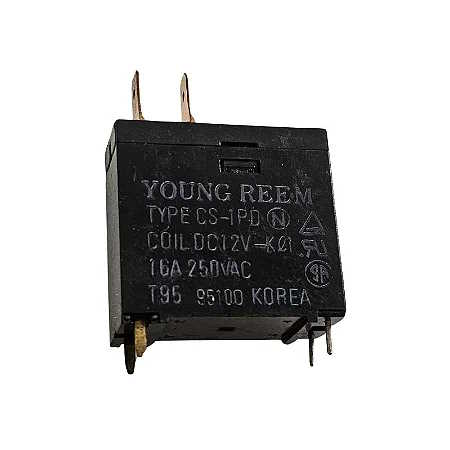
The previous generation of relay was typically Aromat or Omron. These were good Japanese relays with contact surfaces that were machined in some way as to suppress arcing and extend the life of the unit, as these were often switching 10A. Not these junkers - they were simply copper buttons on an arm, and they would arc. It wasn’t unusual to get a control board that didn’t operate - it was stuck on or didn’t work at all. The relay was usually melted closed, or had so much carbon on it (and melted surface area) that it wouldn’t close anymore. I don’t have exact numbers, but we went through these relays like they were free cookies.
My boss, the shop manager, asked the project engineer about these relays. Project engineer said that they received several samples direct from Samsung and they worked great, he wasn’t sure why they didn’t work here. Boss asks if he bought them through retail channels - no - so Samsung probably hand-picked these test units. We’d constantly get ones with different names on them. Young Reem, Star, DEC, etc…I remember seeing at least 6 types, so who knows where they were actually coming from. They just looked and felt bad.
What does that mean? Any microwave that used these was born to fail. This one, fortunately, has limited hours and a lower power magnetron, so the contacts haven’t blown themselves apart. Yet.
Diagnosis
When I first plugged this thing in, it’s “uh-oh.” There are several problems that could cause this kind of display, including:
Bad resonator (clock)
Bad microcontroller
Bad power supply
Bad soldering
Cracked circuit board
Something in the display/keypad lines
These units were better at soldering than some of their earlier brethren - those were terrible and you’d often get cracks in the board, cracked solder on the transformers, bad solders on the micro and resonator, or no-solders. I can’t count how many no-solder units I got on my bench, with a couple being that way because they had enough flux on them that the board was completely gooey with it.
I almost immediately eliminated the resonator and micro because I could see the scanning of the diplay in the camera’s preview. That means it was still driving the display properly, and not just in a locked up state.
A quick look and the board and soldering on this one look ok, including the resonator. I was getting ready to check power when I noticed the ribbon cable for the keypad just didn’t look quite right. I undid the connector, pushed it around a little, and closed it.
The keypad and display can share lines on the micro, so if one is bad the other can be bad as well. The keypad in particular is a ribbon with carbon contacts that slides down into a mating connector. The connector then has a plastic blade that goes into the body and pushes the ribbon against the contacts. These connectors are garbage, they will break at their hinge and change shape slightly over the years. As this sat in a camper van, hot, cold, hot, cold…the ribbon wasn’t seated properly.
This isn’t the best shot, but you can see the ribbon coming around from the front of the keypad into it’s connector. This one didn’t break when I opened it(!)
It doesn’t take long to test, so I plugged it in and was rewarded with the power-fail all segments on display. Keypad works now, I was able to set the time:
I put it back together, gave it a test, and it made much happy hot water.
That was an easy fix - I was worried some unobtainable part (like the mask-programmed microcontroller) was dead, but it’s not. Off to the office with you!
- 2025
- Jul
- 3
Connecting a shared drive and file sensor to Home Assistant Green.
The Home Assistant Green is just a Linux boxen running a containerized version of Home Assistant under a minimalist operating system. Technically, it should be able to do anything that the kernal supports, and one of those things is connecting to a shared drive.
I have a Raspberry Pi that has an I2C air pressure sensor connected to it. Once a minute, a cronjob reads that sensor and writes it to a location on the network - in this case a shared folder on a NFS-connected Synology drive. That file is then available for other programs to use - primarily my own garbage php frontend, and Cacti. Since Home Assistant has a nicer frontend than Cacti, I’d also like to present it there.
There’s a lot of conflicting information on how to do this online, and again - the documentation HA provides is just someone’s thought process. It’s actually fairly easy once you figure it out, however.
For this exercise, I’m using my older NFS connected Synology NAS. It has older versions of NFS opened up to the entire network. I’m not going to go into how to do that since I’m running a pre 5.0 variant, but if you want to do this for yourself make sure you understand how the NFS process works, and that you can connect to it. I’m also going to assume that you know how to access the configuration files in your system.
In order to create this new sensor, there are several steps:
1: Create the NFS share on your target device.
2: Create the share in Home Assistant
3: Allow HA to access the share
4: Create the sensor
1: We’ve already covered this, you need to make sure you can do this on your own.
2: Creating a share in Home Assistant is much easier than it used to be. Since a version in 2023, the system now has this builtin to the GUI. To access this, go to:
settings (sidebar gear icon) > system > storage > add network storage
You’ll get a window that looks like this:
Give your share a name. I’m going to call my share raspi, because it was originally set up to share files between multiple SBCs on my network. This is the name that the HA process will use when you access it, so make it meaningful, one word, and as short as you can so you don’t have to type a lot of long things. Or, do whatever you like, but I’d suggest keeping it to a single, no-space word. I don’t know how HA handles spaces here.
The next section is entitled “Useage” - this is kind of misleading, as the only thing this does is identify where the share will be located under the HA process. For example, if you choose “share,” your file path will be “/share/raspi” - it’s more of a human readable delineation than an actual “thou shalt only put thine backup here” type of thing. I chose share just because why not.
Next, choose the type of connection you want to make, NFS or CIFS. CIFS is just a fancy name for the type of shares that a Windows system uses, while NFS is the preferred Linux connection method. There’s plenty of info out there on what these acronyms mean if you’re so inclined.
CIFS usually requires a user/pass/domain type thing (Think your windows login and workgroup) whereas NFS can just operate based on IP address limiting. Since I’m using NFS, I chose that and entered my share:
<ip address>:/volume1/raspi
ip address is self explanatory, it’s the address of my share. Follow this with a colon, and the entire path of the share - Synology units call each volume by it’s numeric name, so “volume1, volume2,” etc. My share is on the first disk and is called raspi, which is the same as the name I gave it for home assistant. I’m calling my share on HA and on the remote share the same thing, but you don’t have to. Call it whatever you like within the Home Assistant system, as long as you’re mapped to the correct place on the remote share.
Assuming all is correct, hit connect and if right, it should just do it. Now, on the storage page you should see your new connection as ipaddr/path/to/share. It won’t say this, but now home assistant has mapped /share/raspi to this shared location on your network.
3: You’ll need to allow the Home Assistant container access to these foreign locations, and that involves editing your configuration.yaml file. So load up the file editor add-on (or install it) and navigate to your configuration file. You’ll need to add a new block to your config - I like to do this right before my sensor: block.
homeassistant: allowlist_external_dirs: - '/share/raspi - '/share/raspi/hass'
Note the single quotes!
What we’re doing here is adding a block called homeassistant: and using the allowlist directive to tell HA it can indeed access these locations that aren’t it’s native systems. I’ve gone ahead and added both the directory I need to access, as well as a directory I can write to later that’s specifically set up for this machine. I don’t know if top-level permissions are inherited, so I just added each individual directory on it’s own. This is pretty much the same format as all other directives in the yaml file, so just follow others if you’re unsure. Spacing is important here!
In my example, raspi is the directory where all the sensor values I want get written, and hass is a directory just for this machine that I can write to and retrieve things from. Create directories as you need them, you don’t need to make extras if you’re not going to use them.
Once you’ve added the directories, use the configuration checker under developer tools to make sure your config is good, then restart the HA process. Allow some time for everything to come back up and populate the new fields. The share seems to persist through this, so you should be good to leave it alone.
4: To create a sensor, you’ll need the file sensor with the “file” integration. To do this:
setting (gear icon) > devices &services > add integration > file > set up a file based sensor
Search for file in the integrations list
You’ll get something that looks like this:
Fill out the form with your sensor (entity) information.
File path is the HA path you set up, in this example it would be:
/share/raspi/airpress.txt
where airpress.txt is the file we want to read. You’ll need to call this whatever you’re trying to read. This should be a single value with no other stuff attached.
Template is the yaml code you want to use to process the value you read. Since my value is already what I want, I left it blank. You may need to change that - yaml code is beyond the scope of this document.
Unit of measurement is just that. It’s just an identifier and only means something for you. In my case, I chose inHg since it’s air pressure. You could call it chickens/hour, °Quackenbush, or “Bob.” Whatever you like. Hit submit, and it should create a new entity creatively called “file.” Click on the entities link, then click the new “file” entity, and edit so the name means something using the gear icon.
You now have a new sensor populated by a value that you can manipulate like any other sensor.
- 2025
- Jun
- 30
A Zenith X184 Clock Radio - AA5 capacitor replacement part 2
The Zenith X184 doesn’t require much repair, just your typical old radio problems. So…first step is to gather the parts we need to do the repair. In this case, a 47μF and 100μF capacitor to replace the 40μF/80μF part, a neon bulb, and a 100kΩ dropping resistor for the neon bulb.
The 47μF is a part that was originally slated to go into the Hallicrafters S-38C I did a while back, but some goofball soldered it in backwards and had to remove it. Thus, the shorter than expected leads…
Anyway, first thing is to make the neon assembly:
Normally, you’d use a lot lower value dropping resistor - probably 68kΩ or some such value. I’m popping it up to 100kΩ so the bulb lasts longer.
Next is to put the capacitor(s) in place. This is mostly just cutting out the old one and installing new. I decided to just leave them float on their wires since you’d have to throw the thing to bend the metal chassis. They’re tied together and tied to a cable bundle, so they aren’t going anywhere, and the electrons don’t care. Chassis is ground on this one, so even if it did go somewhere it would simply burn out the filament of the 35W4 which acts like a fuse.
The original capacitor was essentially open. I got a few pF on the capacitor checker.
Next is to install the neon bulb. This is inserted into a clear plastic piece that acts like a lightpipe for the dial face. This part wasn’t meant to be replaced - I had to carefully unsolder the brown wire from the tab and pull it off the pipe. The neon fits into a recess at the bottom, so you kind of have to tape the new one in place so it doesn’t fall down on to the metal faceplate. I added some electric spaghetti to help protect the leads from shorts, and soldered it and the two connections (including the salty pretzel wire!) and finished with some heatshrink.
So, it’s time to button up. Does it work? Yep…and the first thing it says after an extended sleep is a commercial for the drug-o-the-day. Sorry radio, things have changed since you were here last.
(The camera exaggerates the light, but you’d be able to see this in a completely dark room no problem.)
That’s all for this one, these AA5s are easy to repair for the most part. Next up is a rebuild on the Heathkit AG-7.
Previous part of this series: https://wereboar.com … -replacement-part-1/
- 2025
- Jun
- 30
A Zenith X184 Clock Radio - AA5 capacitor replacement part 1
Up next on the bench is this pretty good example of a Zenith X184 clock radio.
It’s not in too bad of shape, has a few chips…
But not too bad for 1966.
It’s cost reduced ad absurdum, and doesn’t even have a PCB.
The underside of the chassis is pretty messy. That big orange cylinder is the problem with this one, it’s no longer a capacitor.
And the dial lamp is bad as well…no surprise, this thing is baked.
Everything else looks to be ceramics with one couplet. Should be an easy fix, part two of this is on the way.
Next part of this series: https://wereboar.com … -replacement-part-2/
- 2025
- Jun
- 30
The Heathkit AG-7 Audio Generator part 5: It’s gonna need everything.
I received some new tubes for the Heathkit AG-7, and that did nothing - so the unit is probably going to need most (if not all) of the parts replaced.
In the previous part, the oscillator just quit. I discovered a part in the power supply was radically out of tolerance, but replacing that did nothing. As I was troubleshooting, the lamp in the oscillator circuit that’s used as the PTC resistor started glowing red and flickering, indicating high current draw. The output would jitter in time to this flickering, like the oscillator was trying to start, but couldn’t. This is a symptom of wein-bridge oscillators, they require a balanced diet of feedback and amplification to start and oscillate properly.
Then the smoke started. Ok, there’s something seriously wrong here, so off it goes and discharge the filters. I decided to start checking the parts in the circuit that were isolated enough to give me a reading without something in parallel interfering. I found some good ones. Case in point, this 100kΩ resistor:
But as you can see, the meter tells me that this is actually closer to 700kΩ. Not surprising for a high-value carbon, and a spot check of other components revealed a similar story.
Now, you’re going to be saying that checking directly across a resistor in a circuit shouldn’t give a higher value, and you’re correct - at best, it should be it’s marked value but may be lower due to the effects of parallel resistance. That this part reads nearly 7 times it’s listed value says that it’s indeed very much bad.
I’d say this thing had a lot of repairs over the years, as there are plenty of mixed component types. So…it gets entirely rebuilt, because it’s going to need it. Stay tuned, I’m going to do this one in stages.
Next part of this series: https://wereboar.com … -removing-everthing/
Previous part of this series: https://wereboar.com … ator-part-4-repairs/


